Top 2023 food and nutrition trends for education and health professionals.
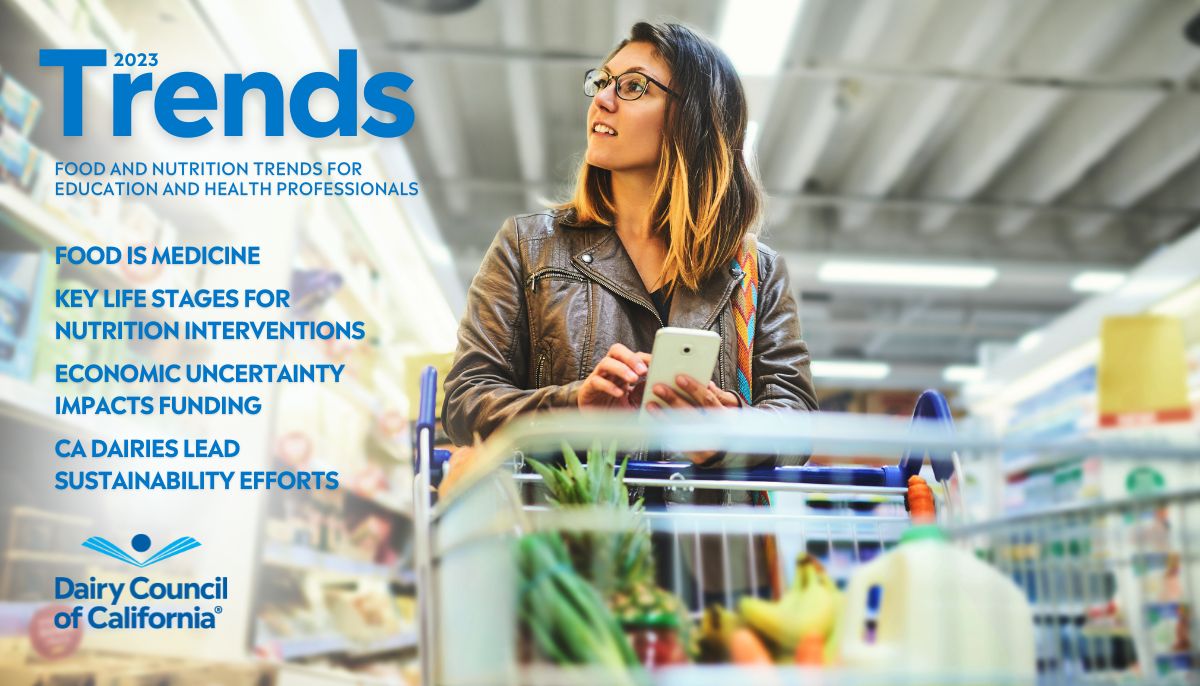
By: Megan Holdaway, RDN and Bessie O'Connor, RDN
Jump Ahead
In today’s rapidly changing world, people are reflecting more often on the food choices they make and how those choices impact the world around them. There is passion for food, particularly in younger generations, who share images that express their values and identity to followers on social media.1 Many people are choosing foods for their perceived long-term impact on health and the environment rather than relying on quick fixes.2 On the other hand, lack of nutrition security3 remains a critical issue across the United States, disproportionately impacting Black and Latino households4, as well as other groups, including young adults.5,6
Underscoring food choices and climate change are conversations about diversity, equity and inclusion. Latino Americans currently comprise 55.9% of the public elementary and secondary school population in California.7 Shifting demographics throughout California and the United States create a need to consider unique cultural food preferences and nutritional needs, which will require collaboration and bringing broad perspectives to the table.
Fortunately, there is more momentum for improving population health than ever before and opportunity to come together to create lasting change. The 2022 White House Conference on Hunger, Nutrition, and Health convened in September for the first time in over 50 years and resulted in a federal strategy that outlines specific priorities to end hunger, improve nutrition and physical activity and reduce disparities surrounding them.8 Promoting equitable access to nutritious food, including milk and dairy, requires long-term investment at all levels.
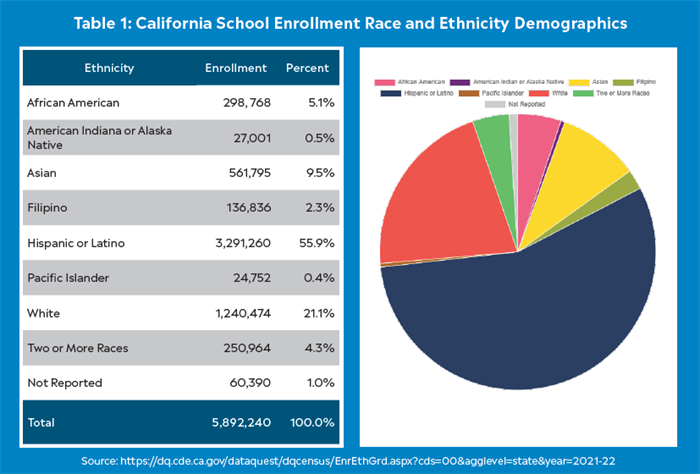

 “Food
is medicine” programs, which aim to make a connection between diet and disease treatment, management and prevention, typically focus on three areas of service: medically tailored meals, medically tailored food packages and produce prescription
programs.
9 These programs aim to sustain health, prevent disease and be therapeutic for those with health conditions or situations that are impacted by changes to the diet.10
Researchers from Tufts University determined that medically tailored meals could prevent 1.6 million hospitalizations and save insurers $13.6 billion if implemented across the United States.11 “Food is medicine”
programs are evolving from community pilots to public health programs. More funding and grants are becoming available to establish them, especially from the federal government, including a $59.4 million investment in produce prescription and nutrition
incentive programs12 and the recent announcement that Medicaid benefits may soon be spent on certain food programs.13
“Food
is medicine” programs, which aim to make a connection between diet and disease treatment, management and prevention, typically focus on three areas of service: medically tailored meals, medically tailored food packages and produce prescription
programs.
9 These programs aim to sustain health, prevent disease and be therapeutic for those with health conditions or situations that are impacted by changes to the diet.10
Researchers from Tufts University determined that medically tailored meals could prevent 1.6 million hospitalizations and save insurers $13.6 billion if implemented across the United States.11 “Food is medicine”
programs are evolving from community pilots to public health programs. More funding and grants are becoming available to establish them, especially from the federal government, including a $59.4 million investment in produce prescription and nutrition
incentive programs12 and the recent announcement that Medicaid benefits may soon be spent on certain food programs.13
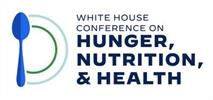 “Food
is medicine” as a health solution is moving to the mainstream conversation, engaging food policy advocates, health professionals and consumers. This focus is due, in part, to the 2022 White House Conference on Hunger, Nutrition, and Health,
which shared commitments of cross-sector funding to work toward a goal of improving health and nutrition security, with “food is medicine” highlighted as a key strategy. Among the private and public sector commitments to “food is
medicine” is one from the Rockefeller Foundation and the American Heart Association to mobilize $250 million to build a national Food is Medicine Research Initiative.14 This initiative aims to increase understanding
and use of “food is medicine” programs and make them an integral part of the health care system.
“Food
is medicine” as a health solution is moving to the mainstream conversation, engaging food policy advocates, health professionals and consumers. This focus is due, in part, to the 2022 White House Conference on Hunger, Nutrition, and Health,
which shared commitments of cross-sector funding to work toward a goal of improving health and nutrition security, with “food is medicine” highlighted as a key strategy. Among the private and public sector commitments to “food is
medicine” is one from the Rockefeller Foundation and the American Heart Association to mobilize $250 million to build a national Food is Medicine Research Initiative.14 This initiative aims to increase understanding
and use of “food is medicine” programs and make them an integral part of the health care system.
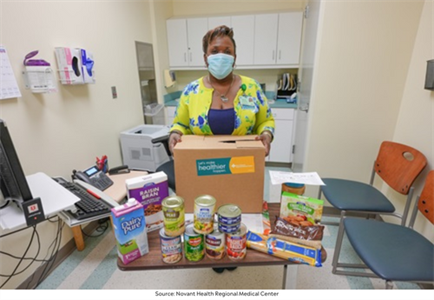 On
an individual level, consumers see nutrition as a solution to both physical and mental health challenges. There is also a growing demand for foods with health properties beyond basic nutrition, whether those claims are backed by science or not. In
one survey, 84% of those polled consider health and wellness as a key factor when buying fresh food, citing benefits such as weight and chronic disease management, disease prevention, immunity building, improved mental health and cognitive performance.
15 The Kroger Company, the largest supermarket operator by revenue in the United States, is responding to consumer interest through its Food as Medicine platform that features telenutrition with registered dietitian
nutritionists and curated food boxes.16 Health and wellness were prominent trends prior to the onset of COVID-19 but living in a pandemic era brought consumer interest in health-promoting foods to the forefront.
17
On
an individual level, consumers see nutrition as a solution to both physical and mental health challenges. There is also a growing demand for foods with health properties beyond basic nutrition, whether those claims are backed by science or not. In
one survey, 84% of those polled consider health and wellness as a key factor when buying fresh food, citing benefits such as weight and chronic disease management, disease prevention, immunity building, improved mental health and cognitive performance.
15 The Kroger Company, the largest supermarket operator by revenue in the United States, is responding to consumer interest through its Food as Medicine platform that features telenutrition with registered dietitian
nutritionists and curated food boxes.16 Health and wellness were prominent trends prior to the onset of COVID-19 but living in a pandemic era brought consumer interest in health-promoting foods to the forefront.
17
Implications: “Food is medicine” programs are rising to the top of solutions, but the long-term impact and feasibility of scaling these programs is not yet known. Professional development to train, educate and support health professionals and educators on the front lines of implementing interventions will be crucial. While many consumers are selecting functional foods, it’s important to remember that underserved communities do not have the same access to such foods. Nutrition education efforts should be broad in focus with emphasis on high-quality, culturally relevant and accessible foods that align with current guidelines and promote improved access for all.

 Proper
nutrition during the earliest stages of life supports a foundation for lifelong health and success.18 In fact, investing in women and children’s well-being during the first 1000 days of life keeps countries
from losing billions of dollars related to lower economic productivity and higher health care costs.19 Researchers are also beginning to understand the impact of nutritious diets during pregnancy and early childhood
on mental health later in life, where it is positively associated with attributes such as conscientiousness and imagination.20 As science continues to uncover the unique nutritional needs during early life stages,
dietary recommendations to best achieve nutrition security during this critical window of time are a growing priority. The recent announcement of the 2025 Dietary Guidelines Advisory Committee members reinforced this fact, with almost one-third having
expertise in maternal, infant and/or childhood nutrition.21
Proper
nutrition during the earliest stages of life supports a foundation for lifelong health and success.18 In fact, investing in women and children’s well-being during the first 1000 days of life keeps countries
from losing billions of dollars related to lower economic productivity and higher health care costs.19 Researchers are also beginning to understand the impact of nutritious diets during pregnancy and early childhood
on mental health later in life, where it is positively associated with attributes such as conscientiousness and imagination.20 As science continues to uncover the unique nutritional needs during early life stages,
dietary recommendations to best achieve nutrition security during this critical window of time are a growing priority. The recent announcement of the 2025 Dietary Guidelines Advisory Committee members reinforced this fact, with almost one-third having
expertise in maternal, infant and/or childhood nutrition.21
During pregnancy, the inclusion of milk and yogurt in a person’s diet provides iodine and choline, two important nutrients that support neurocognitive growth and development.22,23 Federal nutrition assistance programs provide a safety net to fill in key nutrient gaps and support healthy growth and development for children. With increased efforts to achieve nutrition security by the White House, USDA’s Food and Nutrition Service recently announced proposed changes to the foods prescribed to participants in the Special Supplemental Nutrition Program for Women, Infants, and Children, known as WIC. More than 6 million low-income mothers and children rely on WIC for consistent and equitable access to healthy, safe and affordable foods and beverages. Dairy products like milk, yogurt and cheese play a central role in the WIC program, as well as other federal nutrition assistance programs, ensuring participants get 13 essential nutrients--including calcium, vitamin D and potassium, three of the four nutrients of public health concern as noted by the Dietary Guidelines for Americans. Closing nutrient shortfalls is critical, as a recent survey highlighted that cases of suboptimal intake of vitamin D in children rose 15-fold from 2008 to 2014.24
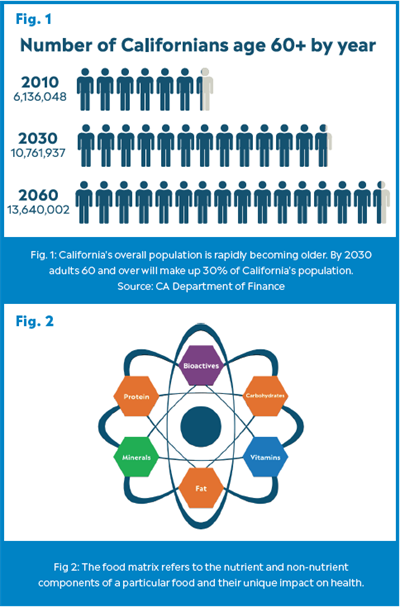 On
the opposite end of the life span is older adulthood, a stage that is garnering more attention as the population of aging adults will continue to grow. In California, the over-60 population is expected to diversify and grow faster than any other age
group; by 2030, older adults will comprise one-quarter of the state’s population.25 Aging adults have unique nutritional needs that are critical for different health and cognitive outcomes,26 as well as a desire for quality of life during aging. Prevention and management of chronic diseases continues to be a key focus of public health efforts to support the well-being of the aging population.
On
the opposite end of the life span is older adulthood, a stage that is garnering more attention as the population of aging adults will continue to grow. In California, the over-60 population is expected to diversify and grow faster than any other age
group; by 2030, older adults will comprise one-quarter of the state’s population.25 Aging adults have unique nutritional needs that are critical for different health and cognitive outcomes,26 as well as a desire for quality of life during aging. Prevention and management of chronic diseases continues to be a key focus of public health efforts to support the well-being of the aging population.
Science reinforces that it is never too late to adopt healthy eating patterns, which include nutrient-dense dairy foods. For example, milk and yogurt reduce risk for overweight or obesity; low-fat dairy and milk reduce risk for hypertension; and yogurt reduces risk for type 2 diabetes.27 Another study found that those with low milk consumption were able to increase glutathione, an antioxidant responsible for reducing oxidative stress in the brain, by increasing milk consumption to the recommended three servings per day. Milk consumption could be a simple and safe option to improve brain health as people age.28 Yogurt consumption may also play a role in preventing frailty, a syndrome characterized by deficits in normal function throughout the body,29 and dairy proteins may have a beneficial effect on muscle mass in older adults.30
Implications: Nutrition research continues to affirm the critical role of nutrition during the unique life stages of pregnancy, early childhood and older adulthood. Future dietary recommendations will be more nuanced, with specifications for eating patterns and foods that provide benefits at different life stages. Research also continues to identify the diverse and unique benefits of whole foods, including plant- and animal-sourced foods like dairy, and their synergistic interactions beyond isolated nutrients. Dairy foods provide a unique nutrient package with proven health benefits and positive impacts on disease states and are a key marker for diet quality. Ensuring dairy foods remain a valued part of federal nutrition programs and recommendations is critical for the health of individuals, particularly during the key life stages of pregnancy, early childhood and older adulthood.

 The
current economic environment is placing pressure on everyone—from individuals to institutions. At home, consumers are responding to rising food costs by changing their shopping behavior to get more value for their money, including buying more
food in bulk, adjusting the quantities purchased and opting for less expensive brands or private labels.17 Restaurants are navigating labor, inflation and supply chain issues by being creative with off-premises
opportunities—such as delivery and curbside pickup—menu innovation and digital ordering to help increase revenue.31
The
current economic environment is placing pressure on everyone—from individuals to institutions. At home, consumers are responding to rising food costs by changing their shopping behavior to get more value for their money, including buying more
food in bulk, adjusting the quantities purchased and opting for less expensive brands or private labels.17 Restaurants are navigating labor, inflation and supply chain issues by being creative with off-premises
opportunities—such as delivery and curbside pickup—menu innovation and digital ordering to help increase revenue.31
 Ongoing
fallout from the pandemic and economic instability are also leading to workforce disruptions, particularly for the education and medical professions. A teacher shortage, which made national headlines, struck most school districts in California to
varying degrees. Districts with a larger number of high-needs students have felt the impact of the shortages more severely, while those that had already struggled to fill vacancies have found innovative ways to hire and retain teachers, such as paying
bonuses and offering student loan forgiveness.32In health care, nearly 334,000 physicians, nurse practitioners, physician assistants and other clinicians left the workforce in 2021 due to retirement,
burnout and pandemic-related stressors.33
Ongoing
fallout from the pandemic and economic instability are also leading to workforce disruptions, particularly for the education and medical professions. A teacher shortage, which made national headlines, struck most school districts in California to
varying degrees. Districts with a larger number of high-needs students have felt the impact of the shortages more severely, while those that had already struggled to fill vacancies have found innovative ways to hire and retain teachers, such as paying
bonuses and offering student loan forgiveness.32In health care, nearly 334,000 physicians, nurse practitioners, physician assistants and other clinicians left the workforce in 2021 due to retirement,
burnout and pandemic-related stressors.33
 At
an institutional level, super-funding for schools is supporting student well-being. In addition to funding its universal school meal program, California allocated $54 million to supplement state meal reimbursements to districts, $600 million for a
grant program to upgrade school kitchens, and $100 million for a grant program to promote best practices for food procurement such as buying California-grown produce and providing alternative options for students with dietary restrictions.34 Governor Newsom’s Master Plan for Kids’ Mental Health includes a $4.1 billion investment in a community schools strategy to connect kids and families to essential services, including health screenings.35 With the uncertainty of the current economic environment, there is concern that increased funding is not sustainable and that budget cuts may start to impact important programming intended to improve child health outcomes. The termination of emergency
Supplemental Nutrition Assistance Program benefits put in place during the COVID-19 pandemic is an example of these potential changes.36
At
an institutional level, super-funding for schools is supporting student well-being. In addition to funding its universal school meal program, California allocated $54 million to supplement state meal reimbursements to districts, $600 million for a
grant program to upgrade school kitchens, and $100 million for a grant program to promote best practices for food procurement such as buying California-grown produce and providing alternative options for students with dietary restrictions.34 Governor Newsom’s Master Plan for Kids’ Mental Health includes a $4.1 billion investment in a community schools strategy to connect kids and families to essential services, including health screenings.35 With the uncertainty of the current economic environment, there is concern that increased funding is not sustainable and that budget cuts may start to impact important programming intended to improve child health outcomes. The termination of emergency
Supplemental Nutrition Assistance Program benefits put in place during the COVID-19 pandemic is an example of these potential changes.36 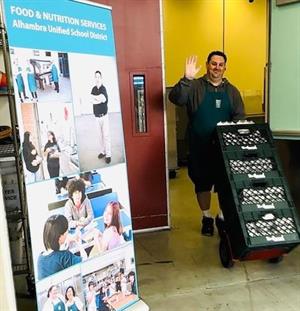
Implications: Economic uncertainty and unpredictability are evidenced through inflation, staffing shortages and budget cuts, all of which are converging with the progress made in federal and state funding for nutrition assistance during the pandemic. With fears of a recession looming, long-term funding for federal and state programs that improve nutrition security and increase access to services is far from certain. Despite challenges, there is an opportunity to build on momentum and advocate for continued funding by utilizing data that demonstrates the health, academic and economic benefits of these programs. As consumers grapple with change and uncertainty, nutrition education can help guide healthier eating choices at home, at school and in restaurants to support overall health and well-being.

 With
increasing efforts to build healthy, sustainable food systems, the California dairy industry is one example in agriculture that is making significant strides to innovate climate-smart farming practices while providing nutritious, locally produced
foods for communities. A report from University of California, Davis concludes that the dairy industry is on target to achieve its commitment to a 40% decrease in greenhouse gas emissions by 2030 and predicts that California dairy farms will reach
climate neutrality by then.37 These successes are a result of energy-efficient lighting, cooling and pumping methods; solar energy; and investments in anaerobic digesters to capture and convert methane in manure
to biogas for clean energy. The amount of water used in dairy farming has decreased 88% in the last 50 years by utilizing unusable agricultural by-products such as almond hulls in cow feed rations and reusing water four times on the farm. New programs
are also using manure to improve soil quality across California’s diverse agricultural sectors.38
With
increasing efforts to build healthy, sustainable food systems, the California dairy industry is one example in agriculture that is making significant strides to innovate climate-smart farming practices while providing nutritious, locally produced
foods for communities. A report from University of California, Davis concludes that the dairy industry is on target to achieve its commitment to a 40% decrease in greenhouse gas emissions by 2030 and predicts that California dairy farms will reach
climate neutrality by then.37 These successes are a result of energy-efficient lighting, cooling and pumping methods; solar energy; and investments in anaerobic digesters to capture and convert methane in manure
to biogas for clean energy. The amount of water used in dairy farming has decreased 88% in the last 50 years by utilizing unusable agricultural by-products such as almond hulls in cow feed rations and reusing water four times on the farm. New programs
are also using manure to improve soil quality across California’s diverse agricultural sectors.38
While California’s dairy industry is a leader in sustainability efforts, implementing environmentally friendly farming practices, dairy’s role in local sustainable nutrition efforts is often overshadowed by advocacy for plant-exclusive dietary patterns as a solution to improve individual and planetary health. Despite a perceived widespread value for plant-exclusive meals, particularly in the school environment39, most people are choosing both plant- and animal-sourced foods. For example, a 2022 survey by the Vegetarian Resource Group found that only 6% of Americans are vegetarian or vegan.40
 Making
the connection between the food people eat and how it impacts health, environmental, social and economic factors is important for creating lasting and effective solutions. To this end, California is investing in farm to school programs to improve
dietary patterns and build value for local, sustainable food systems.41 These efforts have the potential to improve access to local foods, promote sustainable nutrition and expand agriculture education that encompasses
California’s diverse range of plant- and animal-sourced foods.
Making
the connection between the food people eat and how it impacts health, environmental, social and economic factors is important for creating lasting and effective solutions. To this end, California is investing in farm to school programs to improve
dietary patterns and build value for local, sustainable food systems.41 These efforts have the potential to improve access to local foods, promote sustainable nutrition and expand agriculture education that encompasses
California’s diverse range of plant- and animal-sourced foods.
Implications: California’s dairy industry is leading the way in climate-smart farming practices. These advances, combined with investments in farm to school programming, provide an opportunity to promote nutrition security, support healthy communities and elevate sustainable nutrition. Farm tours and professional development opportunities can equip school foodservice and health professionals with comprehensive nutrition and agriculture literacy to inform children and families in their communities.
References
1. Forgrieve J. The changing face of plant-based dining in the digital age. SmartBrief website. https://corp.smartbrief.com/original/2022/09/the-changing-face-of-plant-based-dining-in-the-digital-age. Published
September 12, 2022. Accessed February 15, 2023.
2. Des Jardins S. “Plant-based” has not peaked, but rather grown into a lifestyle. SmartBrief website. https://corp.smartbrief.com/original/2022/12/plant-based-has-not-peaked-but-rather-grown-into-a-lifestyle.
Published December 12, 2022. Accessed February 15, 2023.
3. Mozaffarian D, Fleischhacker S, Andres JR. Prioritizing nutrition security in the US. JAMA. 2021;325(16):1605-1606. DOI:10.1001/jama.2021.1915
4. US Department of Agriculture, Food and Nutrition Service. USDA Actions on Nutrition Security. https://www.usda.gov/sites/default/files/documents/usda-actions-nutrition-security.pdf.
Published March 2022. Accessed February 22, 2023.
5. Mitchell A, Ellison B, Bruening M. Persistent and episodic food insecurity and associated coping strategies among college students. J Nutr Educ Behav. 2022;54(11):972-981. DOI:10.1016/j.jneb.2022.06.003
6. Shi Y, Davies A, Allman-Farinelli M. The association between food insecurity and dietary outcomes in university students: a systematic review. J Acad Nutr Diet. 2021;121(12):2475-2500.e1. DOI:10.1016/j.jand.2021.07.015
7. 2021-22 Enrollment by Ethnicity and Grade. California Department of Education. https://dq.cde.ca.gov/dataquest/dqcensus/EnrEthGrd.aspx?cds=00&agglevel=state&year=2021-22. Accessed March 9, 2023.
8. White House Conference on Hunger, Nutrition, and Health. US Department of Health and Human Services website. https://health.gov/our-work/nutrition-physical-activity/white-house-conference-hunger-nutrition-and-health. Updated
December 8, 2022. Accessed February 15, 2023.
9. Harvard Law School, Center for Health Law and Policy Innovation. Food is Medicine: Peer-Reviewed Research in the US. https://chlpi.org/wp-content/uploads/2013/12/Food-is-Medicine_Peer-Reviewed-Research-in-the-U.S.1.pdf. Published
December 2020. Accessed February 15, 2023.
10. Food as Medicine. Academy of Nutrition and Dietetics Foundation website. https://www.eatrightfoundation.org/resources/food-as-medicine#definition. Accessed
February 15, 2023.
11. Young A. Medically tailored meals could save US nearly $13.6 billion per year. Tufts University, Tufts Now website. https://now.tufts.edu/2022/10/17/medically-tailored-meals-could-save-us-nearly-136-billion-year. Published
October 17, 2022. Accessed February 15, 2023.
12. USDA invests more than $59M to improve dietary health and nutrition security. USDA website. https://www.usda.gov/media/press-releases/2022/11/22/usda-invests-more-59m-improve-dietary-health-and-nutrition-security. Published
November 22, 2022. Accessed March 10, 2023.
13. Armour S, Peterson K. US begins allowing Medicaid money to be spent on food. Wall Street Journal website. https://www.wsj.com/articles/u-s-begins-allowing-medicaid-money-to-be-spent-on-food-62f78cac. Published
February 13, 2023. Accessed February 22, 2023.
14. The White House. Fact sheet: the Biden-Harris administration announces more than $8 billion in new commitments as part of call to action for White House Conference on Hunger, Nutrition, and Health. https://www.whitehouse.gov/briefing-room/statements-releases/2022/09/28/fact-sheet-the-biden-harris-administration-announces-more-than-8-billion-in-new-commitments-as-part-of-call-to-action-for-white-house-conference-on-hunger-nutrition-and-health. Published
September 28, 2022. Accessed February 15, 2023.
15. Redman R. “Food as Medicine” concept embraced by consumers. Supermarket News website. https://www.supermarketnews.com/issues-trends/food-medicine-concept-embraced-consumers. Published
September 26, 2022. Accessed February 15, 2023.
16. Food as Medicine. Kroger Health website. https://www.krogerhealth.com/food-as-medicine. Accessed February 15, 2023.
17. Brewster E. Outlook 2023: consumer trends. Institute of Food Technologists website. https://www.ift.org/news-and-publications/food-technology-magazine/issues/2022/december/features/f1-outlook-2023-consumer-trends. Published
December 1, 2022. Accessed February 15, 2023.
18. Koletzko B, Godfrey KM, Poston L, et al. Nutrition during pregnancy, lactation and early childhood and its implications for maternal and long-term child health: the early nutrition project recommendations. Ann Nutr Metab. 2019;74:93-106. DOI:10.1159/000496471
19. Blythe T. From evidence to action: uniting around nutrition in the 1000-day window. Am J Public Health. 2022;112(S8):S754-S756. DOI:10.2105/AJPH.2022.307063
20. Vejrup K, Hillesund E, Agnihotri N, et al. Diet in early life is related to child mental health and personality at 8 years: findings from the Norwegian mother, father and child cohort study (MoBa). Nutrients. 2023;15(1):243. DOI:10.33901/nu15010243
21. 2025 Advisory Committee. Dietary Guidelines for Americans website. https://www.dietaryguidelines.gov/2025-advisory-committee. Published January 19, 2023. Accessed February
22, 2023.
22. Velasco I, Bath SC, Rayman MP. Iodine as essential nutrient during the first 1000 days of life. Nutrients. 2018;10(3):290. DOI:10.3390/nu10030290
23. Korsmo HW, Jiang X, Caudill MA. Choline: exploring the growing science on its benefits for moms and babies. Nutrients. 2019;11(8):1823. DOI:10.3390/nu11081823
24. Tabaie WE. Vegan and vegetarian children. Today’s Dietitian website. https://www.todaysdietitian.com/newarchives/1122p34.shtml. Published December 1, 2022. Accessed
February 15, 2023.
25. California All. Master Plan for Aging. California Department of Aging website. https://mpa.aging.ca.gov. Accessed February 15, 2023.
26. Grootswagers P, de Groot LCPGM. Nutritional concerns later in life. Proceedings of the Nutrition Society. 2021;80(3):339-343. DOI:10.1017/S0029665121001932
27. Feng Y, Zhao Y, Liu J, et al. Consumption of dairy products and the risk of overweight or obesity, hypertension, and type 2 diabetes mellitus: a dose-response meta-analysis and systematic review of cohort studies. Adv Nutr. 2022;13(6):2165-2179. DOI:10.1093/advances/nmac096
28. Choi IY, Taylor M, Lee P, et al. Milk intake enhances cerebral antioxidant (glutathione) concentration in older adults: a randomized controlled intervention study. Front Nutr. 2022;9:811650. DOI:10.3389.fnut.2022.811650
29. Siefkas AC, Millar CL, Dufour AB, et al. Dairy food intake is not associated with frailty in adults from the Framingham Heart Study. J Acad Nutr Diet. 2022. DOI:10.1016/j.jand.2022.09.012
30. Hanach NI, McCullough F, Avery A. The impact of dairy protein intake on muscle mass, muscle strength, and physical performance in middle-aged to older adults with or without existing sarcopenia: a systematic review and meta-analysis. Adv Nutr. 2019;10(1):59-69.
DOI:10.1093/advances/nmy065
31. Sloan AE. Restaurants reset for a rough ride. Institute of Food Technologists website. https://www.ift.org/news-and-publications/food-technology-magazine/issues/2022/november/features/restaurants-reset-for-a-rough-ride. Published
November 1, 2022. Accessed February 15, 2023.
32. Jones C. Teacher shortage? Depends where you look. EdSource website. https://edsource.org/2022/teacher-shortage-depends-where-you-look/677497. Published August
31, 2022. Accessed February 15, 2023.
33. Landi H. More than 300k healthcare providers dropped out of the workforce in 2021, report finds. Fierce Healthcare website. https://www.fiercehealthcare.com/providers/more-300k-healthcare-providers-dropped-out-workforce-2021-report-finds. Published
November 1, 2022. Accessed February 15, 2023.
34. Tadayon A. Healthier options on the menu as California begins providing free meals for all students. EdSource website. https://edsource.org/2022/healthier-options-on-the-menu-as-california-begins-providing-free-meals-for-all-students. Published
August 16, 2022. Accessed February 15, 2023.
35. Office of Governor Gavin Newsom. Governor Newsom unveils new plan to transform kids’ mental health. https://www.gov.ca.gov/2022/08/18/governor-newsom-unveils-new-plan-to-transform-kids-mental-health/. Published
August 18, 2022. Accessed February 15, 2023.
36. Changes to SNAP benefit amounts - 2023. USDA Food and Nutrition Service website. https://www.fns.usda.gov/snap/changes-2023-benefit-amounts. Updated March 2, 2023. Accessed
March 10, 2023.
37. Kebreab E, Mitloehner F, Sumner DA. Meeting the call: how California is pioneering a pathway to significant dairy sector methane reduction. UC Davis CLEAR Center. https://clear.ucdavis.edu/sites/g/files/dgvnsk7876/files/inline-files/Meeting-the-Call-California-Pathway-to-Methane-Reduction_0.pdf. Published
December 2022. Accessed February 15, 2023.
38. Resource-smart dairy. Dairy Cares website. https://www.dairycares.com/resource-smart-dairy. Accessed February 15, 2023.
39. Victory! Bill promoting nutritious plant-based school meals passes California assembly [news release]. Sacramento CA: Physicians Committee for Responsible Medicine; January 27, 2022. https://www.pcrm.org/news/news-releases/victory-bill-promoting-nutritious-plant-based-school-meals-passes-california#:~:text=SACRAMENTO%2C%20Calif.,plant%2Dbased%20meals%20and%20beverages. Accessed
February 15, 2023.
40. Stahler C, Mangels R. How many vegetarians and vegans are there? Vegan Journal. 2022;(4). https://www.vrg.org/journal/vj2022issue4/2022_issue4_how_many.php. Accessed
March 10, 2023.
41. CA Farm to School Incubator Grant Program. California Department of Food and Agriculture website. https://www.cdfa.ca.gov/caf2sgrant/. Accessed February 15, 2023.
Explore top food and nutrition trends from prior years.